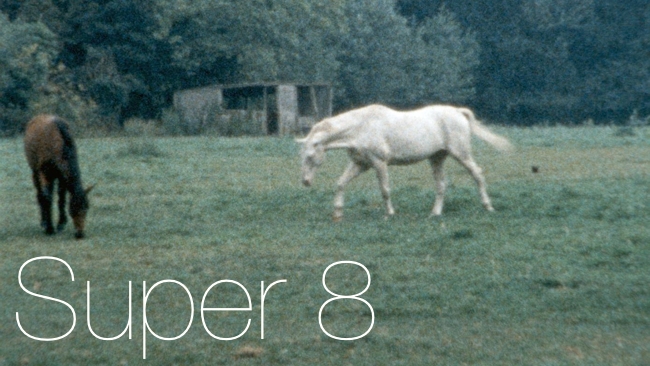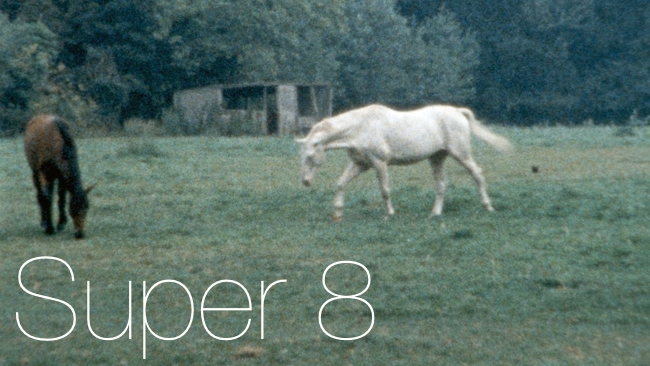
 Super 8
Super 8
Another great article from the vast RedShark Archive. Just in case you didn't see it first time around: "...it's perhaps surprising that the Super-8 film format is still – in what we might have expected to be the twilight of its years – quite popular. The popularity of retro-styled web imaging services like Instagram is another instance of what I suspect may be the same trend, and goes some way toward confirming the suspicion that distressed images are now just as fashionable as distressed jeans"
It is a cruel irony that most technology is, almost by definition, at the zenith of its development at the time it is discontinued. This is particularly true of long-lived technologies like film, which spent more than a century as the best option for both stills and motion picture photography. Photochemical imaging is probably one of our longest-lived technologies, at least at the consumer level. Only engineering fundamentals such as alternating-current electricity and the screw thread tend to last more than a few decades, especially with the accelerating pace of technological development.
Against that backdrop, it's perhaps surprising that the Super-8 film format is still – in what we might have expected to be the twilight of its years – quite popular. The popularity of retro-styled web imaging services like Instagram is another instance of what I suspect may be the same trend, and goes some way toward confirming the suspicion that distressed images are now just as fashionable as distressed jeans.
Certainly, cheap modern video cameras completely eclipse the capabilities of Super-8 in every area except perhaps dynamic range, and not even that if we take the classic colour reversal stocks as a point of reference – even affordable video DSLRs easily exceed the eight or nine stop dynamic range of Kodachrome. Since its inception in 1965, Super-8 has been closely associated with Kodachrome, a notoriously complex stock which had existed since 1935. This complexity was based around the fact that Kodachrome did not include the chemistry required to form colour dyes, requiring them to be applied during several development steps that formed the colour image. This venerable stock was in manufacture for over 74 years, and the sense of history here is palpable.
Modern Stocks
While beautiful, Kodachrome was a reversal stock, which often means insensitivity and noticeable grain. Neither of these are ideal for a very small film gauge. The attractiveness of reversal stocks, for the home movie market at least, was that the camera original could be directly projected, obviating the expense of producing a projectable print from a camera negative. One of the ways in which the march of technology has helped is in simply scanning negative stocks, which are generally much less grainy for the same speed. Kodak make several Vision 3 stocks in Super 8 to this day. Images produced in this way don't naturally have the punchy colour and contrast of a reversal stock like Kodachrome or Ektachrome, but offer far more flexibility and perhaps the ability to simulate a similar look in postproduction. At the time of writing, there was still a selection of reversal stock available in Super-8 from Wittner Kinotechnik, produced by cutting down Fuji stills film.
Cameras
Colour negative materials such as Kodak's 7203, which is an extremely high performance ISO 50 daylight film, have the ability to make Super-8 look better than it ever has before, to the extent that the failings of what were often rather basic cameras can become quite problematic. The challenges of producing adequate registration accuracy on a frame that's only 5.79x4.01mm are extreme, especially on a film that has only one sprocket hole per frame, even if the cameras were engineered to the same standard as a Panaflex – which they generally weren't. Lenses, too, were commonly fixed and, like modern HD pocket cameras, designed to a price rather than a specification. Getting really, seriously good results out of Super-8 requires a pickiness about cameras that can get surprisingly expensive now the best types are well known and there's a significant enthusiast demand for them.
Scanners
These problems are something that modern post techniques can mitigate. Until relatively recently, most Super-8 transfers were primitive, often relying on not much more than a video camera aimed at a projected image. Because Super-8 was invariably shot at 18 frames per second, this can cause problems with flicker, double images, and issues with focus, steadiness and colour which can affect any projected image. Better techniques involve a proper per-frame scan of the film, with the frame rate conversion made later, in software. Modern telecines can often do this, although the last time I checked, it was difficult to find any facility which owned a Spirit and had actually bought the 8mm gate accessory.
Superb work is being done with both modern and historic 8mm material by interested individuals with custom built gear, particularly Belgian Super-8 enthusiast Freddy Van de Putte, whose work with modified projectors and machine-vision cameras, along with careful digital processing of the captured frames, has produced superlative results. It's a bit of a stretch to contend that Super-8 really requires HD resolution to capture all of the information, and the 1388x1036 image seems more than adequate. Particularly interesting is the use of software stabilisation, removing the jitter that's part of all Super-8 and massively improving the appearance of the footage. Colour correction and noise reduction can both help too, although I do know some people who'd probably complain that it no longer looks like Super-8; it looks like bad 16mm, which is a pretty significant achievement!
The Future
Super-8 itself is a development of an earlier format which had somewhat larger sprocket holes, resulting in a smaller image area. Enthusiast variations on this approach, including using the area between sprockets for a wider image or using the now-redundant soundtrack area, are generally aimed at shooting a bigger image for better grain and resolution performance and rely on modern scanning techniques to accommodate the new frame sizes. Whether these sorts of experiments really constitute a future for Super-8 is hard to say, but with Kodak seemingly aware that their own future lies in people with a specific enthusiasm for film they've released new stocks as recently as late 2012 and the future is not as dim as one might have expected.
Some examples of Freddy's images grace this article, but you can find more information on his site at www.super-8.be, and view some surprisingly sharp 50D-originated material below:
Tags: Technology


Comments